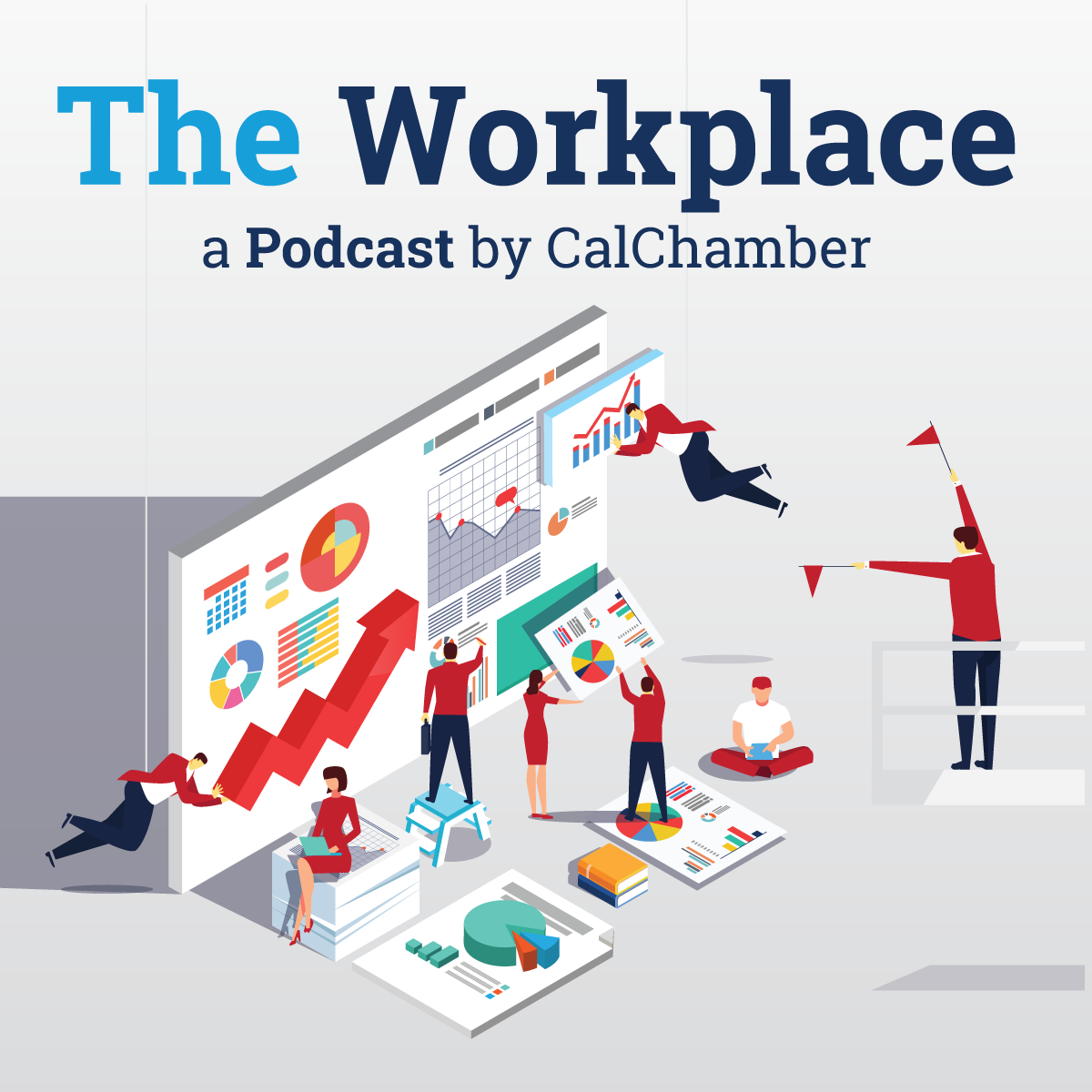
In Episode 165 of The Workplace podcast, CalChamber employment law expert Matthew Roberts, and diversity and inclusion consultant Jonathan Mayes discuss best practices for fostering diversity, equity, inclusion and belonging in the workplace.
The shift in workforce demographics from a majority of baby boomers to a majority of Millennial and Gen Z employees has brought the importance of fostering workplace diversity, equity, inclusion (DEI) and belonging to the forefront for many employment lawyers and HR professionals, Roberts says in kicking off the podcast.
Research has shown that organizations that truly lean into diversity, equity and inclusion typically outperform those that do not, Mayes says. For example, in a study conducted by McKinsey & Company, companies that do best in terms of women in leadership positions are 25% more likely to outperform others at the other end of the spectrum.
Likewise, organizations that do best in terms of being in the top quartile, organizations that embrace DEI, are 36% more likely to outperform organizations at the other end of the spectrum, he says.
And the benefits don’t stop there — companies see increased ability to attract diverse talent with diverse perspectives that can represent the demographics and communities they serve, Mayes adds.
Strategies to Increase DEI
It’s important that companies develop a true mission statement or vision statement as to what their commitment is to DEI. Importantly, the company’s leadership also should actively communicate their support for this effort in all that the organization does, Mayes stresses.
Organization leaders also should think about how the organization demographically represents the communities they serve. Questions leaders can ask are: how closely does the organization’s leadership resemble the community’s demographics? How are prospective employees being hired? How broad is the hiring net to find folks from different groups, different demographics, to come in to interview for open positions? How will these candidates be interviewed? What does the interview panel look like and is there diversity in the panel in terms of not only ethnicity, sexual orientation and age, but also gender?
“My recommendation to companies is that they be really intentional about looking fundamentally in the mirror. What do we look like now demographically? How does that compare across the demographics, areas where we operate? And how can you better reflect that in terms of management in our organization?” Mayes says.
For legal reasons, it’s also important to distinguish between talking about increasing workforce diversity and making hiring or promotion decisions based on someone’s protected class, which can include race or sex, Roberts explains. Employers should not make choices based on someone’s protected class; rather, employers should grant greater opportunities from a more diverse recruitment pool.
DEI and Belonging
Many are familiar with the terms “diversity, equity and inclusion,” but equally important is “belonging.”
Mayes shares that DEI expert Verna Meyers describes diversity as being invited to a dance party, inclusion as being invited to come onto the dance floor, equity as being able to get to the dance floor if you’re in a wheelchair and the floor is elevated, and belonging as a sense that you can walk over to the DJ and request a song like everyone else.
Research has shown that where there are instances of a sense of belonging, there’s a higher percentage of retention and higher potential to attract talent because employees feel happy to be with the organization, Mayes says.
Starting a DEI Initiative
Mayes recommends that companies that want to move forward with a DEI initiative find someone internally or externally who can help guide the process. A thoughtful, clear vision/mission statement should be carefully crafted that outlines what the organization aspires to be in all things DEI. Before going public with this statement, the organization should get different voices in the room as part of the discussion process.
The next step after developing a clearly defined statement, he says, is to outline the steps needed to achieve this mission statement. What are your metrics going to be? How does the leadership look like and at what point do you want the organization to more closely resemble the demographics? Is it by 2028 or 2030?
Next, training will need to be provided to help people understand how best to attain DEI. A company can find resources internally or hire someone externally, but should make sure it gets done.
“It’s one thing to say you’re committed to this culture, but it’s another thing altogether to take steps to try to bring that culture into life, and the steps involve things like training or workshops,” Mayes points out.
The fourth step is retention. An organization should think about how to attract diverse talent, and think about employee resource groups, like a woman’s network group or LGBTQ+ to help inform the organization about how to be better equipped to welcome diverse voices into the workplace.
“When people feel they have a voice, people feel they have a sense of belonging and inclusion,” Mayes says. “And when they have a sense of belonging and inclusion, they’re more likely to want to perform their best, to give their best, to be their best.”

